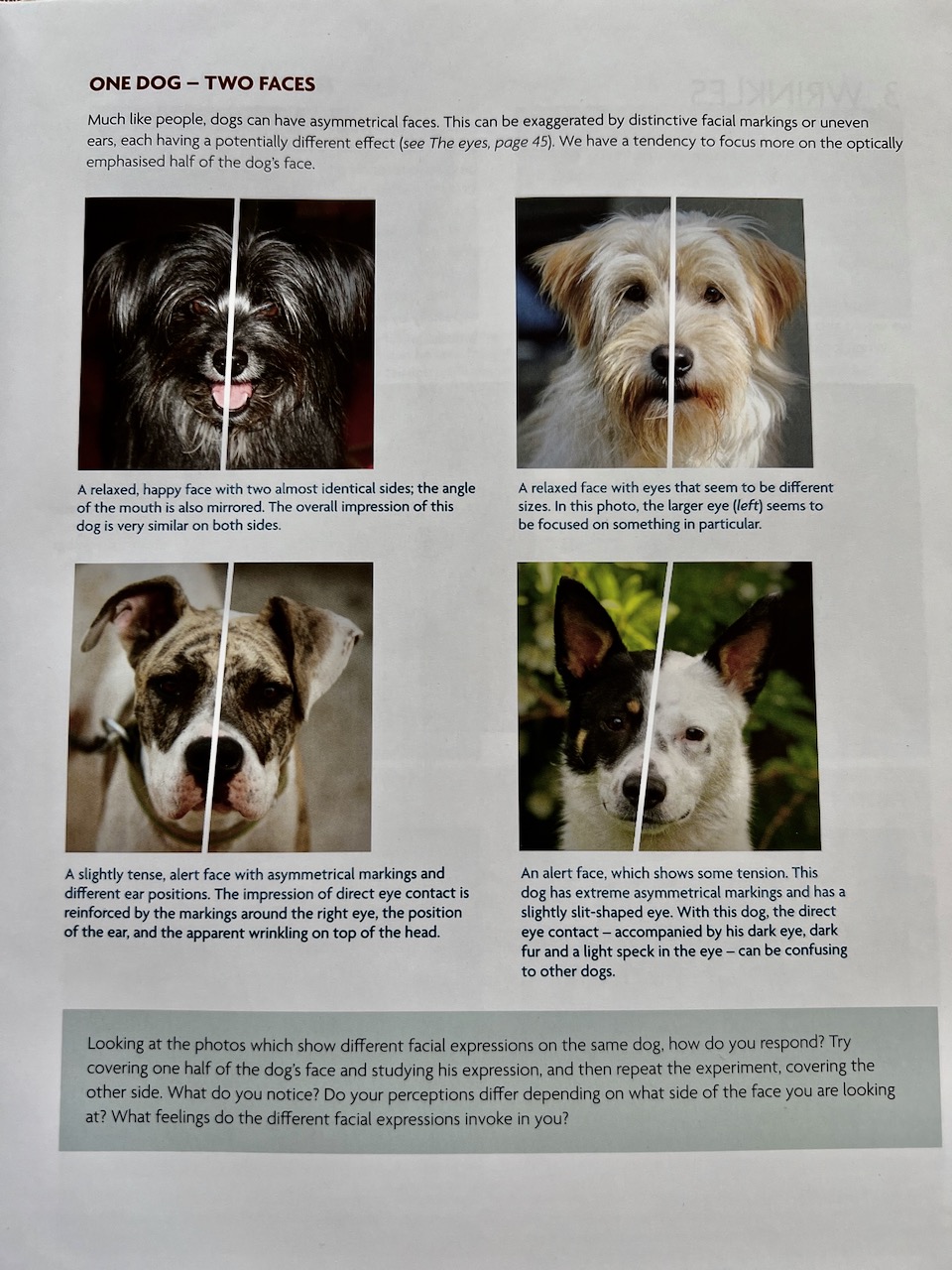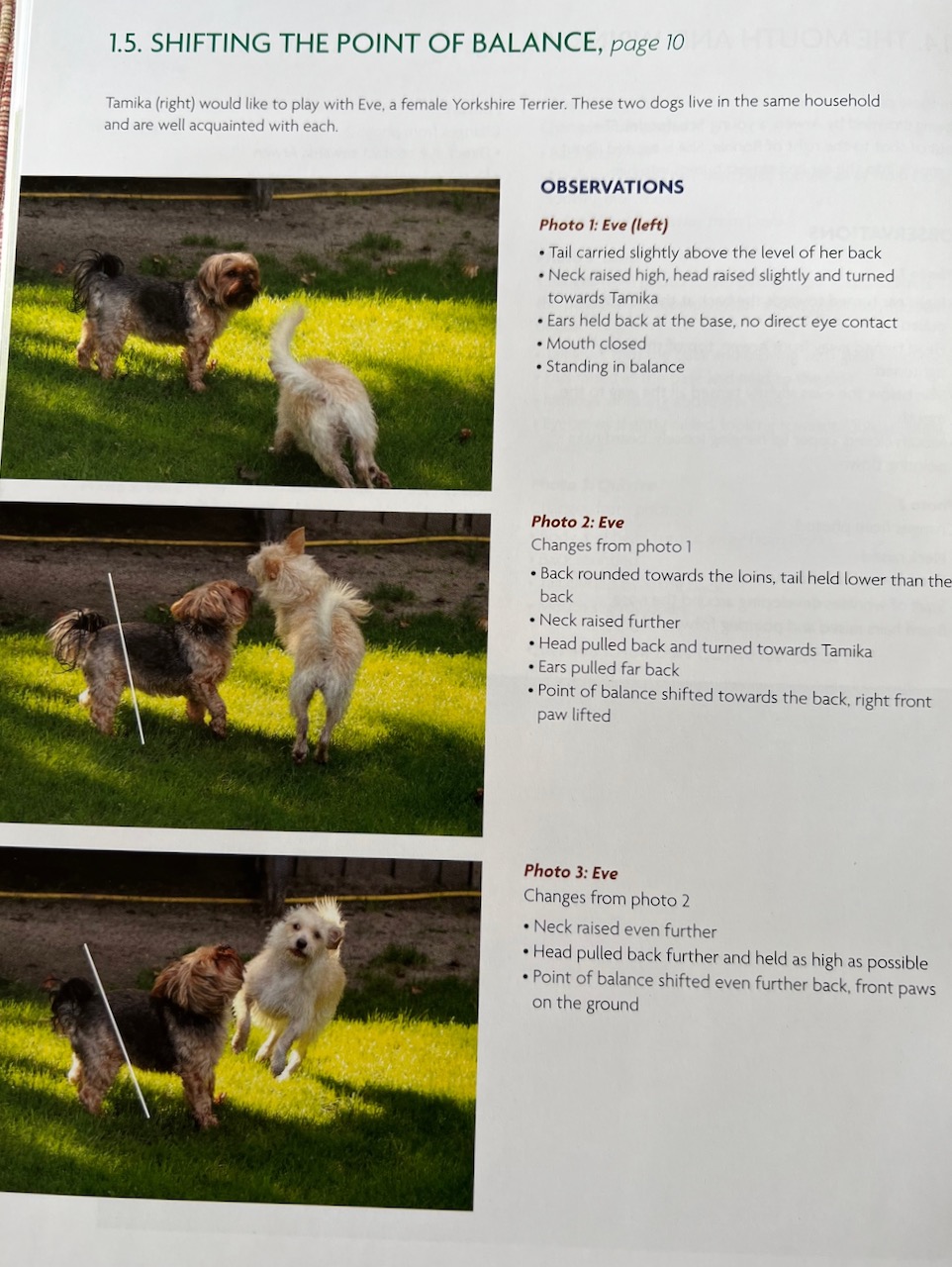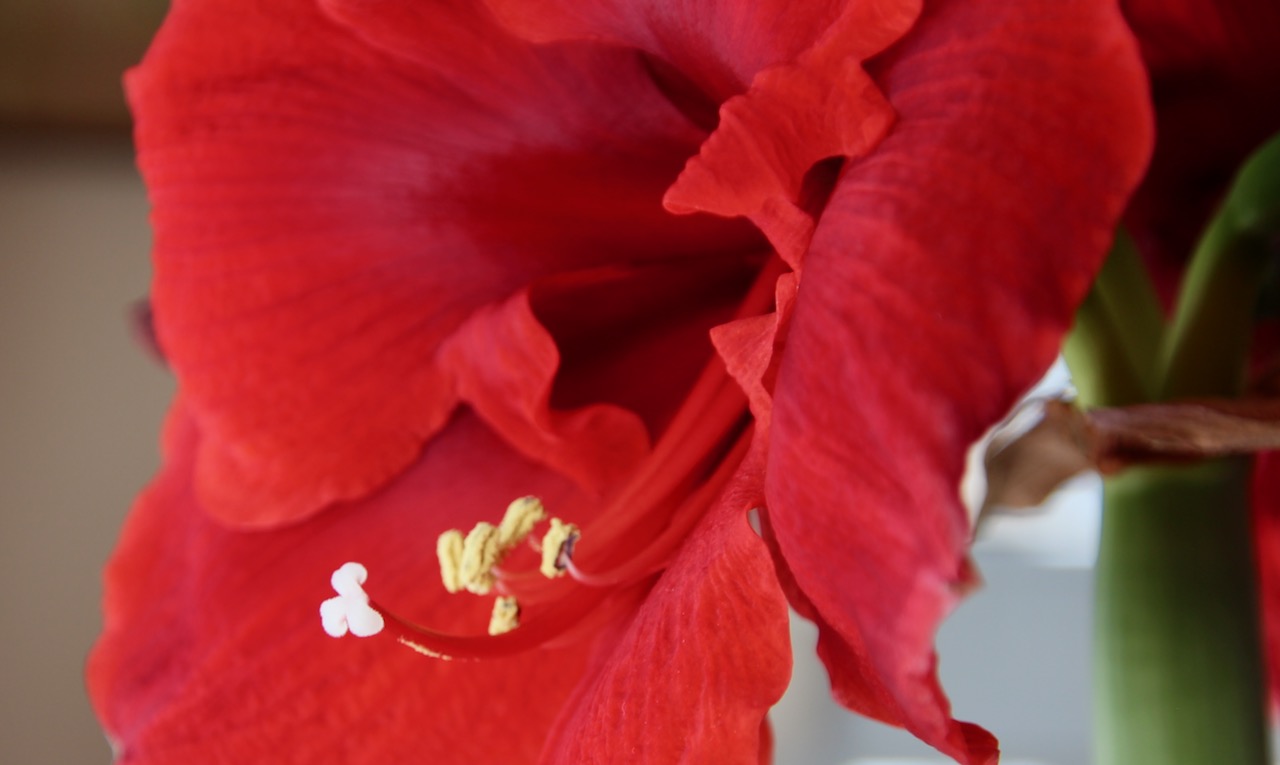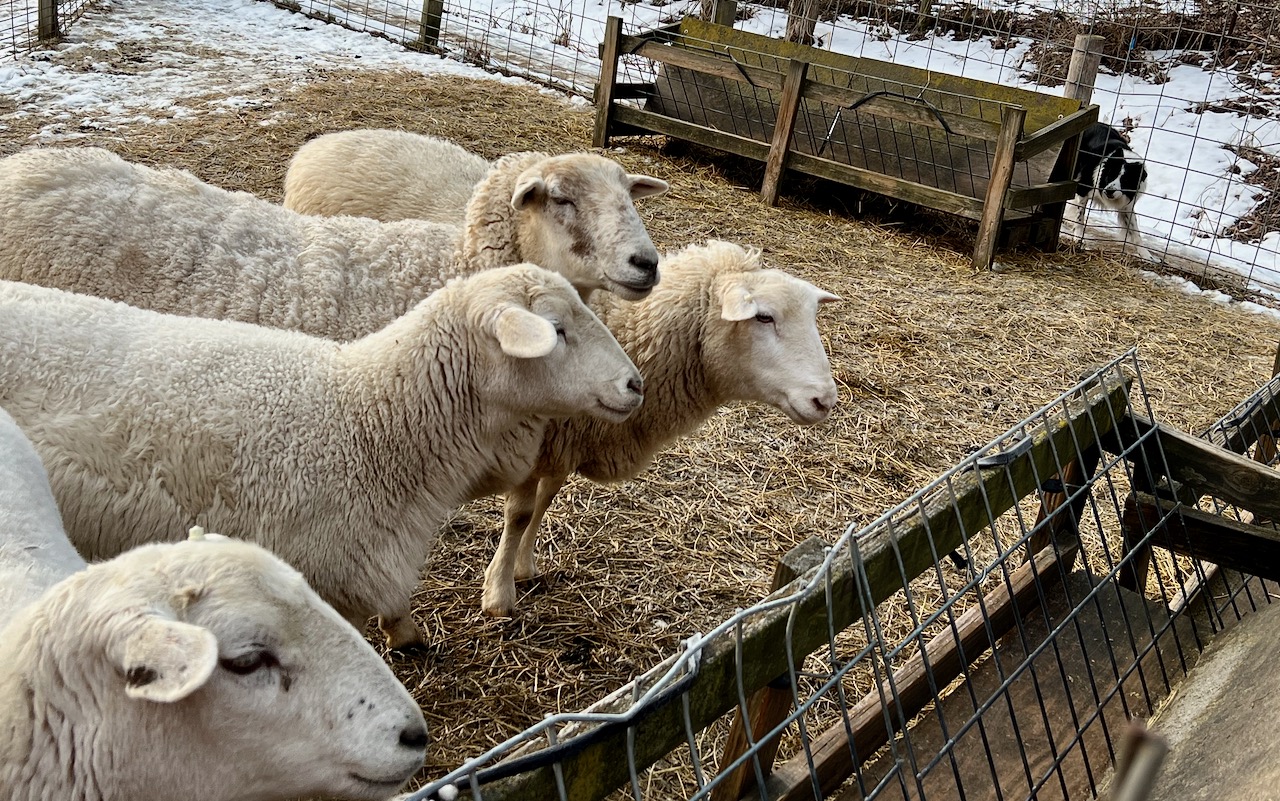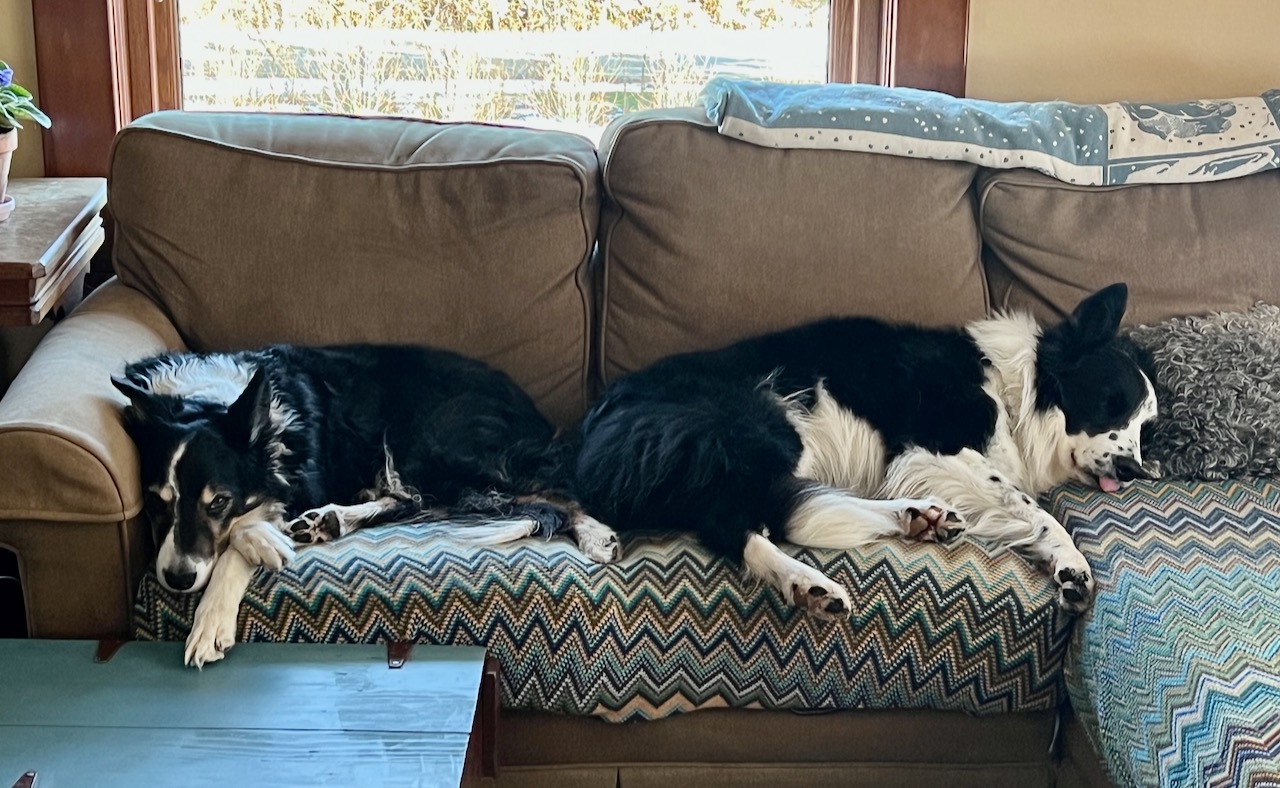My first dog training class, in 1968, involved my adolescent Saint Bernard and an ex-marine instructor who hung a Basenji off a choke chain for not sitting when told. Me and my dog walked out. Years later, in the 80’s, I became interested in dog training and took a friend’s dog to classes for the experience. Both classes focused on the “commands” we were to give our dogs, and how to punish them if they didn’t respond correctly. No one mentioned paying attention to a dog’s posture and expression as a way to be a better dog trainer.
Oh, how far we’ve come! I remember, when I began teaching family dog training classes in the early 90’s, how surprised people were when I asked them to describe a dog’s response to praise and petting after coming when called. “Oh!,” they’d exclaim. “He turned his head away when his owner said ‘Good boy!’ and patted him on the head! Oh wow, I hadn’t noticed that.” Yes! Because no one told them to pay attention, but as soon as they did, it was clear the praise meant nothing, having never been paired with something the dog loves, and the patting on the head was something the dog disliked.
Thank heaven it’s a brave new world, and we have an endless source of books and videos that help us deconstruct what a dog’s outside might tell us about their inside, and, especially, what they might do next. However, I’ve never seen anything even approaching the prodigious work of Katja Krauss and Gabi Maue in the book Dogs in Translation: A unique journey of observation and interpretation. With 468 pages, 1,300+ photographs, and the hefty price tag of $79.95, this is not a book for the casual dog owner. That said, it is an invaluable resource for any one serious about understanding dogs and improving their powers of observation. It comes with a Workbook, which is invaluable in itself.
Here’s part of what I had to say about the book when I was given a review copy:
This book is an accomplishment to celebrate, refining, as it will, our abilities to observe subtle but important visual signals from our dogs. If you’re serious about canine behavior, put this on your “must have” list!
But don’t take my word for it, the book’s supporters include Susan Friedman, Clive Wynne, and James O’Heare. The photographs within are outstandingly clear, the interpretations are well considered, and the predictions (and questions: “What do you think happens next?”) are invaluable.
One of the things that makes this book so special is the attention to detail. How does the light effect a dog’s eyes? Did an interaction with another dog create the minor amount of piloerection we see in this photo? How does breed and structure effect postural signals? I’m struggling to describe this visual symphony of dogness, so I took a few photographs on my dining room table. Any weird perspective/shadows are on me, not the book. Here’s from page 11:
Here’s from page 34 of the Workbook (which comes along with the book):
The author’s ask your prediction about whether these dogs end up playing or not. Care to make a guess? (All subsequent behavior is explained in the back of the book.)
There’s one point that needs to be made about books like this, as elaborate, thorough, and flat-out gorgeous as this one is. Happily, the point was made by one of the authors herself:
“We have the opinion and the dogs have the facts.”
That’s an important reminder that our interpretations, including those of the authors, are just that, and only that. We need to be careful about making assumptions about how any dog is feeling internally. Whether one agrees with all of their interpretations doesn’t matter, what matters is that everything in this book causes you to think hard about what you are seeing, and to be a better observer. What makes this book especially valuable is that the authors not only used split-second photography to illustrate subtle expressions and movement, but they know many of the dogs photographed, and exactly what happened after the photography were taken. Thus, they may be guessing that a particular dog is nervous, but they know for a fact that the dog in question, for example, left the area and chose not to play.
Originally published in Germany by my good friends at Kynos, the U.S. version is published by First Stone in the UK, and distributed in the U.S. by Dogwise. (Apology here: I got it wrong the first time I posted this, said Dogwise was the publisher. Sorry!) And yay for all of them, it is truly a treasure. Nothing I can do or say here adequately represents the depth and breadth of this book. Buy it for yourself, go in with a friend, ask your library to get it, or splurge and donate it to your local humane society. But whatever you do, try to get your hands on this achievement of a lifetime, and enrich your life.
MEANWHILE, back on the farm: It’s spring! Granted, last Saturday, February 18th, was not the “official” start of spring, which is March 20th in the Northern Hemisphere. But years ago I decided to use the first song notes of the Black-capped Chickadee as my indicator of spring, because these adorable, Disney-esque birds may Chicka-dee-dee-dee all winter long, but begin their territorial and mating song in February, and what a sweet sound it is. “Fee bee! Fee bee bee!” they began singing this weekend–music to my ears. Why not call that spring?
In addition, it’s lighter in the evening, so that we don’t have to rush walking the dogs after their dinner before dark, a friend saw some Sandhill Cranes flying in, and we have some bulbs coming up, in spite of my efforts to mind meld them into waiting til April. They are gonna get slammed by ice and sleet and rain and snow, but their leaves are hardy things. Sleet and ice, of course, are predicted just a few days from now, and will come and go all the way through March and part of April. But still. Fee bee! Fee bee bee!
[This is hysterical. I played the video above to check it out before inserting it, and there are now two chickadees raising a ruckus outside the dining room window. Slam me for saying it, but if I’ve ever heard a chickadee sound pissed off, it’s right now. This is amusing, but also a reminder to not mess up birds when they are establishing their territories by playing recordings of their song to call them in. Honestly, I had no idea they would hear the notes that I was playing inside the house. Their responsiveness is truly impressive. ]
It’s spring-ish inside the house too. I almost forgot the two amaryllis I put in the cellar last fall, but finally brought them up and they are growing like crazy. Those pink pretty things in the background are thanks to my sweetheart on Valentine’s Day.
Here’s a bloom from the one I bought last fall that bloomed about a month ago. It’s fading now, but what a joy it has been to a color addict like me.
It’s not always so pretty outside this time of year. You can see in the photo below that there’s the whole spring catastrophe: mud, ice and snow, all at once. The sheep are actually grazing dried grass up the hill where it’s clear, but getting up there requires navigating a lot of ice. In this shot, the sheep are impatiently waiting for me to put their hay in the feeders, while pretending Skip is not outside the fence looking like a hungry wolf.
Do not show the photo below of Skip and Maggie to the sheep. I think Mr. Wonderful, with his adorable little tongue tip, would lose all cred if the flock got a glimpse of it.
May your week be as comfy as Skip looks on the couch (or perhaps as baleful as Maggie looks–do you love the crossed paw?), and let us know if you’ve seen Dogs in Translation, and what you think the dogs on the workbook page will do. Play? Fight? Ignore each other? We’re all ears. And eyes . . .

